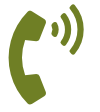Table of Contents
Section Description Introduction Overview of the importance and evolution of SaaS customer engagement strategies. Trends to Watch Key emerging trends shaping SaaS customer engagement programs. Key Lessons Essential lessons learned from successful SaaS engagement strategies. Winning Tactics Proven tactics for building stronger customer relationships and driving engagement. Conclusion Summary of key takeaways and how NextBee’s SaaS Customer Engagement Program can support businesses. Introduction
n a SaaS Customer Engagement Program, where every interaction shapes the customer journey and expectations are constantly evolving, mastering the art of engagement is crucial. It’s no longer enough to simply attract customers; you must captivate them, nurture their needs, and build lasting relationships that drive growth and loyalty. As digital solutions become increasingly integral to everyday life, the strategies for engaging customers must evolve with the times. This ultimate guide delves into the innovative trends, powerful lessons, and proven tactics that are shaping the future of SaaS customer engagement. By embracing these strategies, SaaS providers can elevate their customer experiences, outpace competitors, and thrive in an ever-changing marketplace.
Trends to Watch
As we move into 2024 and beyond, the landscape of SaaS customer engagement is being shaped by several key trends. These trends are driven by technological advancements, changing consumer expectations, and the ever-increasing demand for personalized and meaningful interactions. Understanding and leveraging these trends can help SaaS providers stay ahead of the curve and deliver exceptional customer experiences.
Personalization at Scale
Personalization has always been a cornerstone of effective customer engagement, but in today’s data-driven world, the ability to deliver personalized experiences at scale is becoming increasingly critical. With the help of advanced analytics and artificial intelligence, SaaS providers can tailor every interaction to meet individual customer preferences. This not only enhances customer satisfaction but also drives loyalty, as customers feel more valued and understood. In 2024 and beyond, personalization at scale will be a key differentiator for SaaS companies looking to stand out in a crowded market.
Omnichannel Integration
In a world where customers interact with brands across multiple platforms, omnichannel integration is no longer optional; it’s a necessity. Whether through email, social media, in-app messaging, or other channels, customers expect a seamless and consistent experience. Omnichannel integration ensures that all customer interactions are coordinated and cohesive, regardless of the platform. This trend underscores the importance of a strategic approach to communication, ensuring that every touchpoint contributes to a unified and engaging customer experience.
Customer Success Focus
Customer success has emerged as a vital component of SaaS engagement strategies. Companies are increasingly prioritizing comprehensive onboarding, training, and support to ensure customers achieve their desired outcomes. This market-driven trend reflects a shift towards proactive engagement, where the focus is on helping customers succeed, rather than just reacting to issues as they arise. By fostering a culture of customer success, SaaS providers can build stronger, more resilient relationships.
Advanced Analytics and Data-Driven Insights
The use of advanced analytics is transforming the way SaaS companies understand and interact with their customers. By harnessing big data and machine learning, providers can gain deeper insights into customer behavior, preferences, and needs. This trendsetting approach enables more targeted and effective engagement strategies, driving better outcomes and higher satisfaction. As analytics tools become more sophisticated, the ability to leverage data for strategic decision-making will become increasingly important.
Scalability and Flexibility
In an industry characterized by rapid growth and change, the ability to scale and adapt is crucial. SaaS customer engagement programs must be designed to grow alongside the business, accommodating new customers and evolving needs. This strategic and scalable trend emphasizes the importance of flexibility in engagement strategies, ensuring they can be tailored to meet diverse customer requirements and market conditions.
Key Lessons
Customer engagement is the lifeblood of any successful SaaS business. As the industry evolves, so do the strategies and lessons learned from implementing effective engagement programs. Understanding these lessons is crucial for developing a more robust and impactful customer engagement strategy.
Understanding Customer Needs
One of the most critical lessons in SaaS customer engagement is the importance of understanding your customers’ needs and preferences. Engaging with customers through surveys, feedback forms, and direct conversations can provide valuable insights into what they truly value. This specific and detailed approach ensures that your engagement strategies are tailored to meet the actual demands of your customer base, leading to higher satisfaction and retention rates.
Continuous Improvement
Continuous improvement is a cornerstone of successful SaaS engagement programs. By regularly analyzing customer feedback and performance metrics, businesses can identify areas for enhancement and make informed decisions about their engagement strategies. This analytical approach involves iterative testing, where different tactics are evaluated and refined based on their effectiveness. Real-world applications of this lesson include A/B testing of email campaigns, user interface adjustments, and feature enhancements based on user feedback.
Building Strong Relationships
Building and maintaining strong relationships with customers is essential for long-term success. This involves more than just providing excellent customer service; it requires consistent and proactive communication. Engaging customers through personalized interactions, whether via account managers or automated yet personalized emails, fosters trust and loyalty. Reflecting on customer interactions and adjusting your approach based on their responses is key to strengthening these relationships.
Leveraging Technology
Technology plays a pivotal role in modern customer engagement programs. Utilizing advanced tools for customer relationship management (CRM), analytics, and automation can streamline engagement processes and provide deeper insights into customer behavior. Detailed and actionable lessons from successful SaaS companies include the implementation of AI-driven chatbots for instant customer support, the use of predictive analytics to anticipate customer needs, and the integration of omnichannel communication platforms to ensure a seamless customer experience.
Emphasizing Customer Success
Another vital lesson is the emphasis on customer success. Ensuring that customers achieve their desired outcomes with your product is paramount. This involves providing comprehensive onboarding, ongoing training, and readily available support resources. Reflective practices, such as analyzing customer success stories and challenges, can offer insights into how to better support your customers. Engaging customers through success-oriented programs not only enhances their experience but also encourages long-term loyalty.
Winning Tactics
In the competitive world of SaaS, effective customer engagement is critical for retaining customers and driving growth. Developing a tactical, goal-oriented engagement program can significantly impact customer satisfaction and loyalty. This section explores advanced and industry-tested tactics that SaaS companies can implement to enhance their customer engagement efforts.
Personalized Customer Journeys
One of the most impactful tactics in SaaS customer engagement is creating personalized customer journeys. By tailoring interactions based on user behavior, preferences, and history, companies can provide a more relevant and satisfying experience. This approach involves segmenting customers and delivering customized content, offers, and support. Personalization fosters a deeper connection with customers, making them feel valued and understood.
Proactive Communication
Proactive communication is essential for maintaining customer engagement. This means reaching out to customers before they encounter issues or have to seek assistance. Utilizing automated systems to send timely updates, reminders, and support messages can keep customers informed and engaged. Advanced tactics include using AI-driven chatbots to provide instant responses and solutions, ensuring that customers receive help exactly when they need it.
Implementing Feedback Loops
Implementing effective feedback loops allows SaaS companies to continuously improve their products and services based on customer input. Regularly soliciting feedback through surveys, reviews, and direct conversations helps identify areas for enhancement. This goal-oriented tactic not only improves the product but also shows customers that their opinions matter, thereby increasing their engagement and loyalty.
Utilizing Data Analytics
Leveraging data analytics is crucial for understanding customer behavior and optimizing engagement strategies. By analyzing usage patterns, interaction data, and customer feedback, companies can gain insights into what drives engagement and satisfaction. This essential tactic enables SaaS providers to make data-driven decisions, refine their strategies, and stay competitive in the market.
Offering Value-added Content
Providing value-added content is an impactful way to engage customers. This includes offering educational resources, such as webinars, tutorials, and guides, that help customers maximize the value they get from the product. By strategically creating and distributing content that addresses common pain points and interests, SaaS companies can keep customers engaged and invested in their success.
Gamification Elements
Incorporating gamification elements into the customer experience can make engagement more enjoyable and motivating. This tactic involves adding features like rewards, badges, and leaderboards to encourage active participation. Gamification taps into customers’ natural desires for competition and achievement, making the engagement process more fun and effective.
Conclusion
The landscape of SaaS customer engagement is constantly shifting, driven by technological advancements and changing consumer expectations. By embracing these forward-looking trends, mastering key lessons, and implementing winning tactics—personalization at scale, omnichannel integration, customer success focus, advanced analytics, scalability, continuous improvement, and proactive communication—SaaS providers can stay ahead of the curve and deliver exceptional customer experiences.
NextBee’s SaaS Customer Engagement Program is designed to help businesses navigate these complexities with ease. Our platform offers the tools and insights needed to build personalized, data-driven engagement strategies that not only meet but exceed customer expectations. Whether you’re looking to scale your operations, enhance customer satisfaction, or drive long-term loyalty, NextBee is your partner in creating impactful SaaS customer engagement programs.














